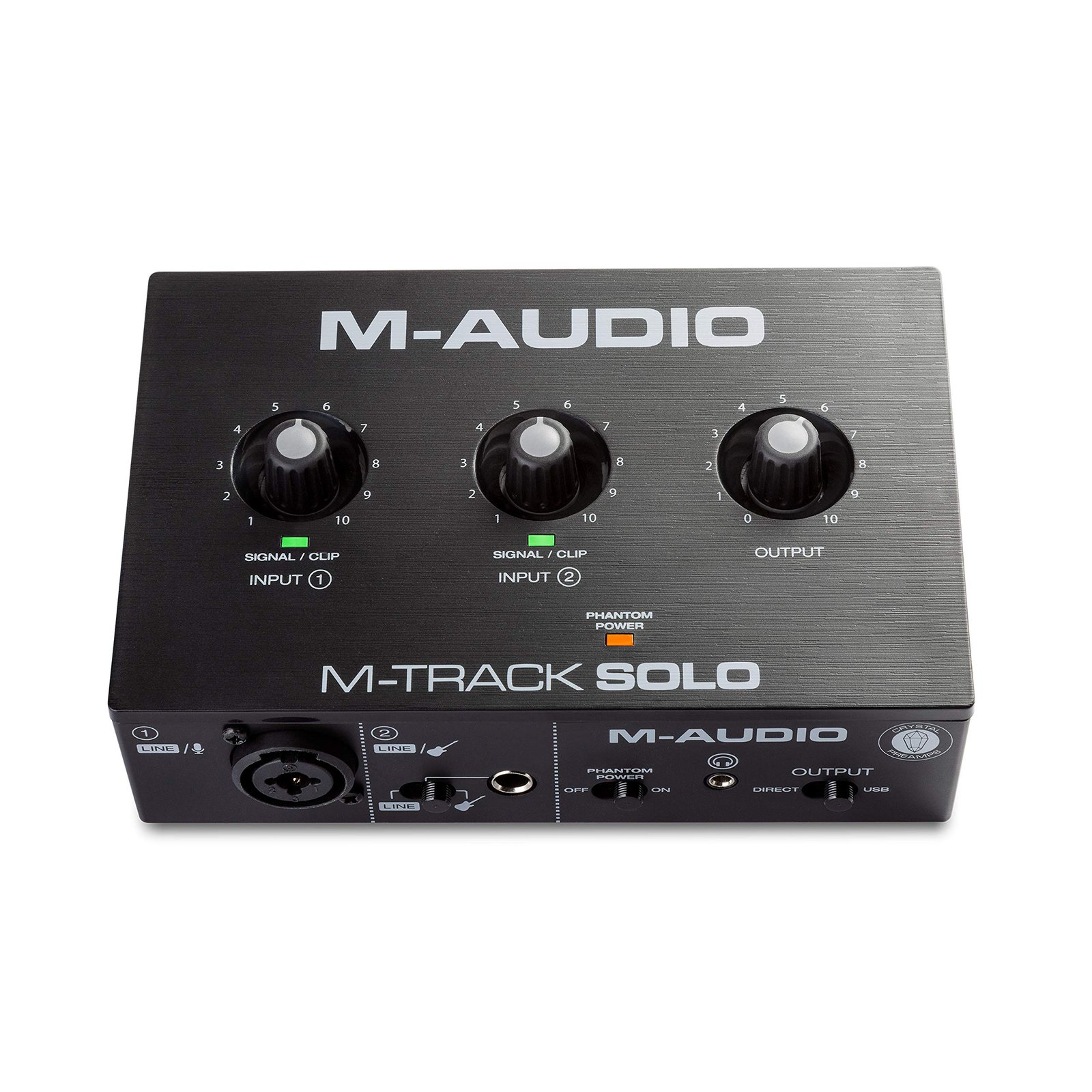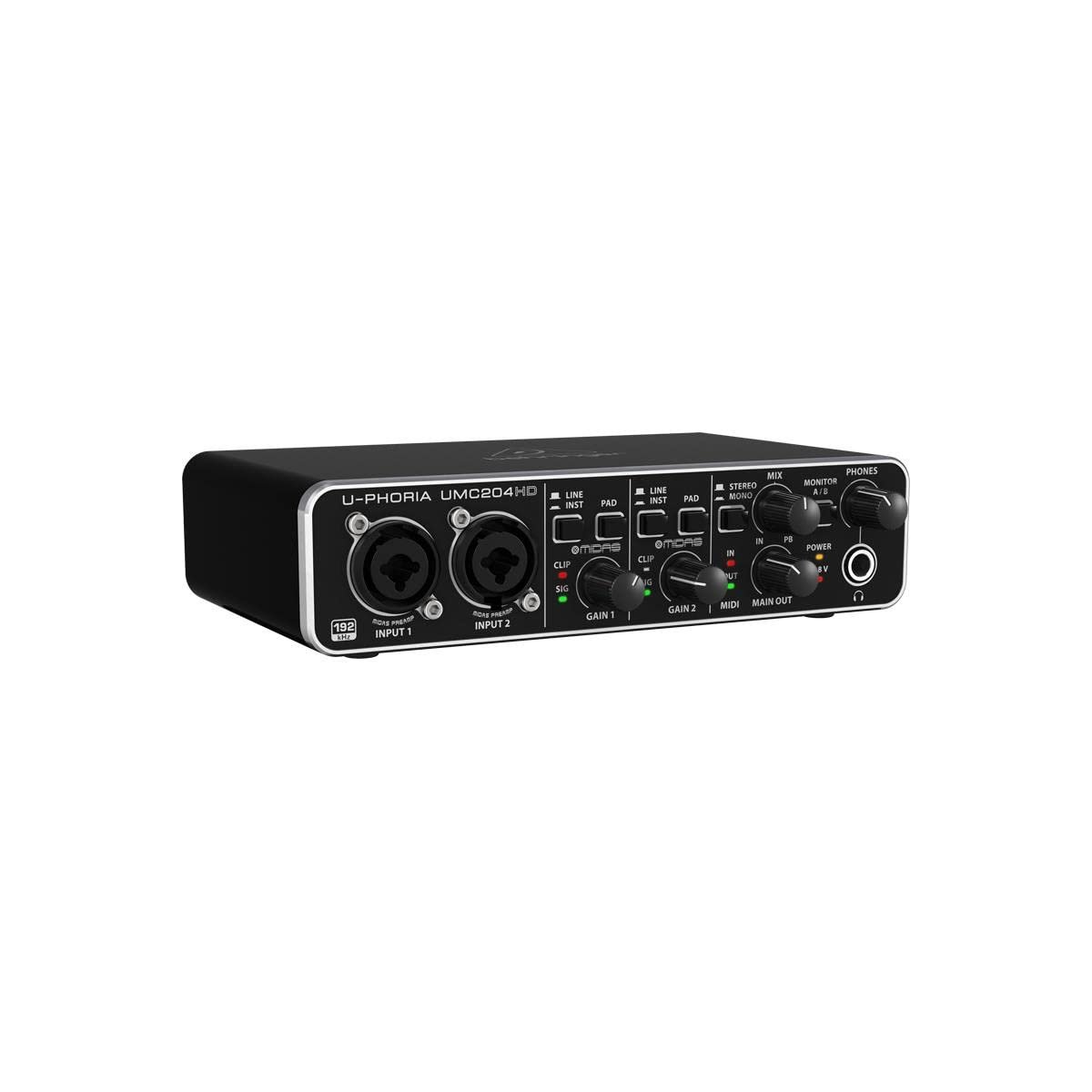In the world of music production and podcasting, USB audio interfaces are a critical tool.
They serve as the bridge between your instruments, microphones, and your computer.
These devices convert analog signals into digital data that your computer can process.
Unlike built-in audio components on most computers, external devices like these typically deliver superior sound quality.
This makes them indispensable for anyone serious about recording at home or in a professional setting.
When considering which USB audio interface to purchase, it’s important to focus on several key factors.
The number of inputs and outputs is crucial, especially if you plan to record multiple instruments or voices simultaneously.
The quality of the preamps can greatly affect the clarity and warmth of your recordings, so look for models with reputable preamp brands.
Additionally, the interface’s compatibility with your computer’s operating system and digital audio workstation (DAW) software is vital to ensure seamless integration.
Choosing the right USB audio interface can significantly impact your recording results and ease of use.
By weighing these factors, you can find a model that suits both your technical needs and budget, setting the stage for producing high-quality audio content.
Top USB Audio Interfaces
You’re thinking about upgrading your setup, and a USB audio interface could be just what you need.
Whether you’re a budding musician or love to create podcasts, you’ll find some great options below.
Let’s check out some of the best USB audio interfaces to bring your sound to the next level.
Focusrite Scarlett Solo 3rd Gen
If you’re after an easy-to-use, high-quality audio interface, the Focusrite Scarlett Solo 3rd Gen might be just what you need for your home studio setup.
- Offers excellent sound quality with 24-bit/192kHz converters.
- Compatible with most recording software without extra hassles.
- Includes a valuable software bundle for music production.
- Limited inputs with only one XLR and one instrument input.
- Some users report occasional setup issues with certain software.
- The plastic build might feel less durable under heavy use.
The Focusrite Scarlett Solo 3rd Gen is your go-to for getting started on your recording journey.
Its high-quality preamp delivers clear and crisp sound, ensuring your vocals and instruments shine.
Whether you’re a guitarist, vocalist, or podcaster, the setup is straightforward, making it a breeze even if you’re new to this.
Having a reliable USB audio interface is crucial, and the Scarlett Solo doesn’t disappoint with its balanced outputs and no external power requirements.
You just plug it in, and you’re ready to go.
Plus, the bundled software enables you to dive into music production as soon as it’s out of the box, offering tools from industry leaders.
On the downside, it might not cater well to those needing multiple inputs for simultaneous recording, which could be a limiting factor for more complex setups.
Nonetheless, given its compact form and feature-rich package, it’s a solid choice for solo artists focusing on ease of use and professional sound quality.
M-Audio M-Track Solo
If you’re looking for a versatile and portable audio interface, this is a solid choice that combines ease of use with great sound quality.
- Crystal-clear audio courtesy of a high-quality preamp
- Lightweight and portable design makes it easy to travel with
- Zero-latency monitoring enhances your recording experience
- Limited to two channels, which may not meet advanced requirements
- No MIDI input if you’re looking to connect other devices
- Build quality could feel too basic for professional needs
The M-Audio M-Track Solo provides a streamlined option for anyone diving into podcasting, recording, or live streaming.
It features a combo input with phantom power, allowing you to connect either microphones or instruments.
Being USB-powered, taking it with you on the go is a breeze, needing only a laptop to start creating.
You can access direct monitoring through both the RCA outputs and headphone jack.
This makes it super convenient to layer your tracks without any delay.
Plus, the included software helps you jump right into your projects without additional expenses.
For casual users and beginners, this interface covers all the essentials.
It cuts down on unnecessary features, letting you focus on what matters—capturing high-quality audio efficiently.
Focusrite Scarlett Solo 4th Gen
This interface is perfect for musicians who want professional audio quality without the need for a complex setup.
- Studio-quality sound with impressive dynamic range
- User-friendly and straightforward design
- Includes a comprehensive software bundle
- Limited to one mic input
- May require additional equipment for advanced use
- Portable but not the most compact option
The Focusrite Scarlett Solo 4th Gen shines with its studio-quality sound, catering to both novice and experienced musicians.
Its dynamic range brings clarity and depth to your recordings, making it an excellent choice for guitarists and vocalists.
Additionally, the intuitive design simplifies setup, allowing you to focus on creating music.
Equipped with a valuable software bundle, it lets you dive right into recording, mixing, and mastering without the need to purchase additional tools.
This convenience makes it ideal for those seeking an all-in-one solution.
Furthermore, its Air mode feature enhances the character of vocals and guitars, delivering a polished sound.
Despite its strong features, the Solo is limited to a single mic input, which might not suit more complex recording needs.
It’s a versatile package, but if you require extensive functionality or portability, you might find it lacking.
Nevertheless, its top-tier sound quality makes it a compelling option for any music enthusiast.
Behringer UM2 Audio Interface
Perfect for those getting started in home recording, the Behringer UM2 offers reliability and convenience.
- Compact and easy to carry.
- High-quality XENYX mic preamp.
- Affordable for beginners.
- Limited to two channels.
- No MIDI support available.
- Occasional noise issues reported.
This ultra-compact USB audio interface is a great option if you’re looking for portability without breaking the bank.
With its studio-grade XENYX mic preamp, you can capture clear audio, whether you’re recording a podcast or a musical track.
The instrument input makes it versatile for different recording needs.
Despite its strengths, the Behringer UM2 has a couple of limitations.
It supports only two channels, which could be restrictive for more extensive setups.
Plus, there’s no MIDI support if you’re planning to incorporate digital instruments.
Users have noted a few noise issues, but these are generally manageable with some adjustments.
Overall, the UM2 is a solid choice if you’re seeking a budget-friendly, compact interface for straightforward recording tasks.
Behringer U-Phoria UMC204HD
A reliable tool for both budding musicians and seasoned producers looking for robust audio quality without breaking the bank.
- High-quality audio with clear sound.
- Includes MIDI connectivity for versatile use.
- Compatible with both Windows and Mac systems.
- Some users may find setup initially challenging.
- Features might be excessive for simple projects.
- Not all devices are equally supported.
Getting into home recording or podcasting? The Behringer U-Phoria UMC204HD might be the gear you’re looking for.
Featuring top-notch MIDAS-designed mic preamps, this audio interface ensures your sound is crisp and clear.
The USB 2.0 connectivity keeps everything running smoothly, so you can focus more on being creative.
The compact design makes it a solid option for both home studio setups and mobile production work.
Whether it’s capturing vocals, plugging in instruments, or connecting MIDI devices, this interface has most aspects covered.
Its sleek design and moderate weight mean it won’t take up much space on your desk or in your bag.
On the other hand, the array of features might seem a bit overwhelming if you’re just starting out.
Some users report a slightly intricate setup process initially, so be ready for a bit of tinkering to get everything set up perfectly.
Yet, once you get it going, it’s smooth sailing—your recordings will thank you!
Buying Guide
Choosing a USB audio interface can feel like a daunting task with so many specs and features to consider.
Focus on what matters most for your needs.
Below are some key aspects to keep in mind while making your decision.
Key Features
Number of Inputs/Outputs:
Consider how many microphones or instruments you’ll be connecting.
A simple setup may only need two inputs, while a more complex one might require more.
Audio Resolution:
Look for audio resolution that supports at least 24-bit/48kHz.
This ensures good sound quality for most recording needs.
Connectivity:
Most interfaces connect via USB, but make sure it’s compatible with your computer’s ports.
Newer models may offer USB-C for faster data transfer.
Additional Considerations
-
Phantom Power:
If you’re using condenser microphones, make sure the interface provides phantom power. -
Latency:
Check for low-latency features to ensure real-time monitoring without delay. -
Software Compatibility:
Verify compatibility with your recording software and operating system.
Budget
A wide range exists for USB audio interfaces, from budget-friendly to high-end models.
Determine your budget and find an interface that offers the features you need within that range.
Spending a little more initially can save you from needing to upgrade later.
Final Tips
Always check reviews or user feedback to get a sense of real-world performance and usability.
What’s perfect for one person might not suit another, so tailor your choice to your specific requirements.
Frequently Asked Questions
When it comes to USB audio interfaces, understanding the nuances can make all the difference in optimizing your audio setup.
Discover insights on how to choose the best one for your needs and how they work with various devices.
How do I pick the best USB audio interface for my home studio setup?
Think about how many inputs and outputs you need.
If you have multiple instruments or microphones, a model with more ports is essential.
Consider the quality of the preamps if recording clarity is a priority.
Budget is also a factor, so find a balance between price and features that fit your needs.
Can I use a USB audio interface with my USB mic, or do I need something extra?
USB mics are usually designed to connect directly to your computer, bypassing interfaces.
If your USB mic has an analog output, you can connect it to an interface for more control.
Otherwise, a direct USB connection might suffice.
What’s the real deal between USB and USB-C audio interfaces – any major diff?
Both USB and USB-C can offer excellent audio quality.
USB-C often provides faster data transfer, which can lead to better performance with lower latency.
This difference may be noticeable in high-end professional setups, but for home studios, either can be a solid choice.
For a newbie, what does a USB audio interface actually do?
It converts analog audio signals into digital data for your computer, improving sound quality compared to built-in sound cards.
This allows you to record and playback with better fidelity.
Interfaces also provide more control over your audio inputs and outputs.
Is there a noticeable difference between a USB audio interface and a mixer?
A USB audio interface focuses on converting and managing audio signals for recording and playback.
A mixer allows you to blend multiple audio sources in real-time and is often used for live sound.
Interfaces usually offer better digital audio quality, while mixers are brilliant for live setups.
I’m confused about USB DAC and USB audio interfaces – can you tell them apart?
A USB DAC (Digital-to-Analog Converter) is mainly for playback, enhancing audio output quality.
Meanwhile, USB audio interfaces include DAC functionality but also allow for recording, adding inputs for microphones and instruments.
If you need to record as well as listen, a USB audio interface is your best bet.






